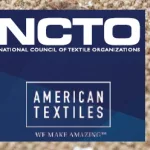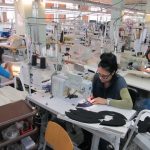The traditional dress may be defined as the ensemble of garments, jewelry, and accessories rooted in the past that is worn by an identifiable group of people. The phrase traditional dress or costume is often used interchangeably with the terms ethnic, regional, and folk dress.

Five different provinces and cultural differences
The shalwar kameez is the national dress of Pakistan and is worn by men and women in all Five provinces Punjab, Sindh, Baluchistan, Khyber Pakhtunkhwa, and Gilgit Baltistan in the country and Azad Kashmir. Shalwar refers to loose trousers and kameez refers to shirts.
Since 1982, all officials working in the secretariat are required to wear the national dress. The culture of Pakistan includes five different racial groups: the Punjabis, Sindhis, Baloch, Pashtuns, and Kashmiri. Dress in each regional culture reflects weather conditions, way of living, and distinctive lifestyle which gives them a unique identity among all cultures.
Pakistani fabrics and costumes express the culture of Pakistan. Significantly, this colorful and vivid culture, lifestyle, and trend in clothing and fashion are visible as soon as you step into this region such as Sindh.
History
During the medieval period and before the Mughal rule, the costumes worn by the people of Sindh resembled the dresses worn in Iraq and adjoining countries. The dresses included short velum and Iraqi-style long robes.
If any drawers were used, they were of the Iraqi style, such as the pantaloons which were also adopted in neighboring Multan and also in the coastal areas of Gujarat.
However, the use of such Iraqi clothes in Sindh was limited to Mansura, the Arab capital city, established in 712 C.E. and was not universally adopted throughout the territory. Arab rule in Sindh ended in 1050 C.E. Along with these dresses, Sindhis also endue other traditional raiments.
Unique Sindh colorful and hand embroidery design(the breathtakingly sizzling designs)
The Sindhi culture has been evolved from the ancient Indus valley civilization. Sindh is blessed with many natural resources that grab the attention of people and attract foreigners particularly pleasantly.
The captivating culture of Sindh is under the great influence of Sufi policies and canon. The most appealing factor about these Sindhi dresses is that they tremendously enhance the export area of Pakistan. People living abroad approach these traditional Sindhi dresses by getting them imported from Pakistan.
There are popularly engrossing items that are incredibly adored by people from different countries. Admirably, the best quality of different handmade clothing items produced in Sindh is that they are designed by the women residing in villages who glorify their endearing art through embroidery.
Over and above, highlighting the traditional part of Sindhi hand embroidery, the designs were mostly made on brightly dashing colors such as maroon and black Khaddar fabric along with extremely attractive color threads of red, yellow, orange, blue, and green.
Hyderabad is the second largest city of Sindh province; and the people in Sindh, share a rich tapestry of culture and heritage that shapes who they are and where they live.
Various sorts of thread twisted silk or silken smooth floss or cotton yarn can be preferably used for embroidery which will make the quality satisfying to the people.
Sindh cultural dresses for man
Most of the time males opt for a black kurta shalwar due to the message it sends, it’s simple yet subtle. The normal usage items include; clothes made of Soosi and Khaadi, among the most popular items in fashion.
Symbolizing the true Sindhi culture, the people wear a version of the shalwar called a suthan with a kameez called ‘cholo’, the Sindhi Ajrak and topi (cap) are the most popular and widely used traditional clothing items. Men also traditionally wear dhoti and long angerkho.

Ajrak and topi are considered as a symbol of honor, pride, and respect. These traditional beautiful designs are made locally. For its Various beautiful traditional designs, mostly used to honor a guest on occasions in educational institutions as well as given as a souvenir and also worn in wedding ceremonies and cultural events.
Sindh traditional women clothing
Sindh, being the province of Pakistan is well renowned for the especially fantastic hand embroidery of the wonderful mirror quality enclosed with thread. On special occasions, the majority of women prefer wearing heavily designed hand embroidery clothes that give an extraordinarily beautiful look making them the attention of attraction, also known as “Sindhi Bhart.”
“Hurmoocho” being the original and specific Sindhi Bhart. Unmarried girls wear the opening to the back and married women, to the front. There are colorful dupattas, known as “Chunri”, which incorporate beautiful colors and designs.
Sindhi women wear the lehenga and choli known as the ‘Gaji’, which is a pullover shirt worn in the mountain areas of Sindh. The Gaji is composed of small, square panels, embroidered on silk and sequins.
The neckline of the Gaji is cut high, and round on one side, with a slit opening extending the other. Other clothing items include; “Ralhi” (quilt), which incorporates the applique work, is used as a bedsheet cover, decorating walls, etc.
Thriving fascinating embroidered Sindhi bags
Sindhi people present their incredibly prodigious handmade bags for the ladies. Sindhi women are singularly attracted towards these brightly colored bags and just with one laudable look, they buy them. These beautifully designed bags with double ten folds fit perfectly with the ladies’ embellishment.
These traditional bags are made by highly skilled and creative designers. One will be amazed to realize the fact that these designers are none other but those who belong to poor families and are rural people in general.

Generally, one bag demands frame attentiveness, focus, and also eye-catching bright colors. The raw materials being Sindh itself actuate unbreakable attention. They collect their raw materials for this incredible product from the local market.
The satisfying cloth used to make Ajrak and also the lovely classy mirrors are already embedded in it giving additional profit to these pleasantly enchanting bags.
Conclusion
The fact states that Sindhi embroidery can easily compete with another design. It remarkably has a huge scope of co-temporization. This colorful and beautifully designed apparel is the outstanding creation of the commendably brilliant people of Sindh province.
By exporting their unique design fabric they can earn foreign exchange.
By exporting traditional items, people from all around the world will be able to know about the culture and traditions of Pakistan and rural women can earn their livelihood by doing hand-knitted yarn embroidery.
(Courtesy: Textile Today)






